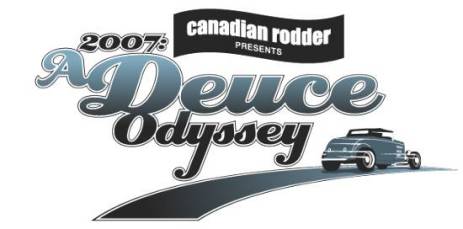| FYI and to digress slightly, some info
about caster, camber and toe in: “Caster
is the backward or forward tilt of the kingpin measured in
degrees from true vertical. A backward tilt of the kingpin,
which is usual in most beam or tube axled rods, is called
positive caster. The angle of caster effects the steering,
e.g., positive caster causes the front wheels to run straight
and influences the return to center of the steering wheel.
Negative caster causes the steering to be ‘touchy’
and harder to control at speed.”1)
Conventional wisdom suggests that caster be set at 6 degrees
(positive) although I have seen 5-7 suggested.
“Camber is the inward or outward tilt of the wheels,
measured in degrees from true vertical, when viewed from the
front. Positive camber is when the wheels lean out, negative
when the wheels lean in. Excessive camber will cause premature
and uneven tire wear. In most hot rods, the camber should
be between zero and 1/2 degree positive and in most cases
the camber is engineered into the axle at the angle at which
the kingpin hole is machined into the kingpin boss.”2)
As we will utilize an I-beam axle, the above applies to us.
While we’re discussing front end specs:
“Toe-in, toe-out is the angle at which the wheels point
when viewed from the top. Toe-in is when the wheels point
slightly toward each other at the front, toe-out is when they
point away from each other. With rear-wheel-drive, the leading
edges of the tires tend to pull away from each other, so they
are set with toe-in to counteract that tendency.”3)
Back to conventional widom, “hot rods with radial tires
should be set with 1/8-inch toe-in. Hot rods with bias-ply
tires should be set with 3/16-inch toe-in. Adjustment can
be made by screwing the tie rods ends in or out.”4)
Note 1) - 4): excerpted from So-Cal Speed
Shop and is meant as reference only. |



